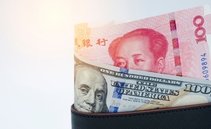China’s GDP disappointed expectations, suggesting even worse times to come.

China’s GDP grew far less than expected in the second quarter of the year, data from the National Bureau of Statistics showed on Monday. The measurement reignited fears of a Japan-like stagnation in the world’s second-largest economy for this and the following years.
The Chinese Gross Domestic Product expanded by 4.7% year-on-year compared with the 5.1% forecast by a Reuters poll of economists. That is also slower than the first-quarter growth of 5.3% annually, which itself was higher than expectations.
Monday’s data puts China’s GDP expansion in 2024 at 4.8%, especially as most analysts expect slower growth for the second half of the year. The Chinese Communist Party said the country would achieve a 5% GDP growth in 2024, considered wildly ambitious by most external observers.
“Overall, the disappointing GDP data shows that the road to hitting the 5% growth target remains challenging,” Lynn Song, chief economist for Greater China at ING, told Reuters.
China’s sluggish growth fell on the backdrop of the country’s biggest real estate crisis in history. Real estate amounts to almost 25% of the country’s economy and has been in dire straits since property giant Evergrande defaulted on its offshore obligations in 2021.
Conversely, a long-drawn deflationary wave depressed Chinese consumer confidence, causing domestic demand to plummet. China’s CPI in June barely increased year-on-year at 0.2%, far below the 2% target most of the world’s central banks use to estimate healthy inflation growth.
leggi anche
China’s "time bomb": its $13 trillion local debt

Export-driven growth
Despite most indicators pointing to a general crisis in the Chinese economy, its exports have consistently beaten expectations in 2024. Exports from the world’s largest producer increased by 8.6% in June as imports fell by 2.3% year-on-year. That made China’s trade surplus (the difference between exports and imports) the highest since 1981.
Exports were the main driver of growth for the first half of the year. However, several factors suggest exports may join the rest of China’s economic depression in the coming months.
First, China’s services and production output are declining. In June, China’s Purchasing Managers’ Index (PMI), which measures the country’s output, came in at 49.5. Any value below 50 indicates a contraction.
Moreover, most of China’s main trading partners are raising barriers against its products. The European Union enacted tariffs up to 48.1% against Chinese electric vehicles. Similarly, the United States raised duties against a swath of Chinese products to 100%.
Even some Chinese allies are turning their back on Beijing. Indonesia, part of the ASEAN trading partnership, raised duties to 200% against Chinese products.
With a fall in exports, the Chinese GDP will lose its biggest and only driver of growth. How will the global economy react to this shock is anybody’s guess.
Argomenti




